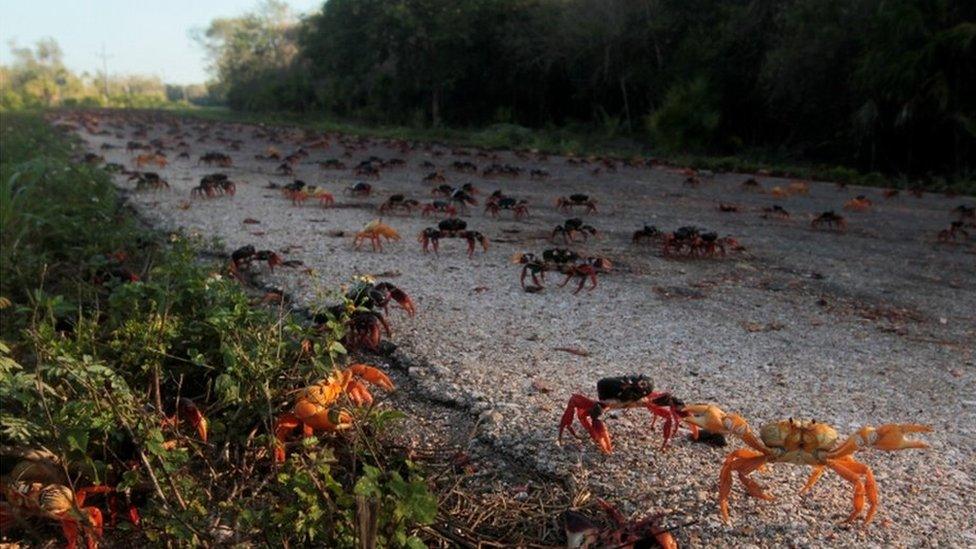Millions of crabs begin their annual migration in Cuba
- Published
- comments

The annual event sees millions of crabs travelling from the forest to the sea
Check out these totally CL-AWESOME pictures!
Millions of crabs have begun their annual migration on the Caribbean island of Cuba.
This spectacular event sees red, yellow and black land crabs travel from their homes in the forests to the sea on Cuba's southern coast, to lay their eggs.
The migration happens every year, but some scientists say there are more crabs this year.
What happens?
The crabs even climb up walls in order to get to the sea!
After the island麓s spring rainfall begin, the crabs - which are usually active at night - emerge at dawn and dusk and scuttle sideways toward the sea.
Nothing gets in the way of their mission - they even climb up house walls, sneak into houses and shops and take over the roads that lead to the coast!
According to locals, the crabs have emerged earlier than usual and in larger numbers.
Scientists think this might be because of the coronavirus pandemic. Lockdown and fewer tourists in the country meant that crab numbers were able to grow as it was easier for them to make the journey to the sea.
Why do they do this?
Similar crab migrations occur in other counties too, such as Australia
You might be wondering what causes millions of crabs to move from one end of the island to the other at the same time?
Well, the crabs are travelling to the sea to lay their eggs.
Crabs can walk in all directions, but because of the way their knees bend, they mostly walk and run sideways!
After releasing their eggs into the sea, the adult crabs return to their forest burrows.
The eggs then hatch in the sea and around a couple of months later, the babies return to their parents in the forest!
Similar crab migrations occur in other parts of Cuba at the same time of the year, as well as in some other special ecosystems around the world such as Australia's Christmas Island.
- Published24 March 2022
- Published23 March 2022
- Published21 March 2022
